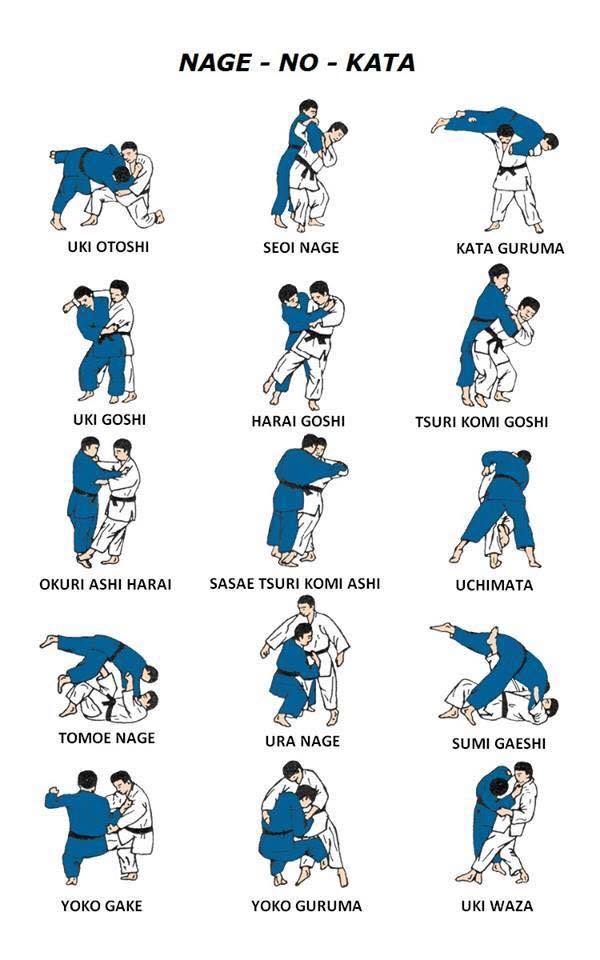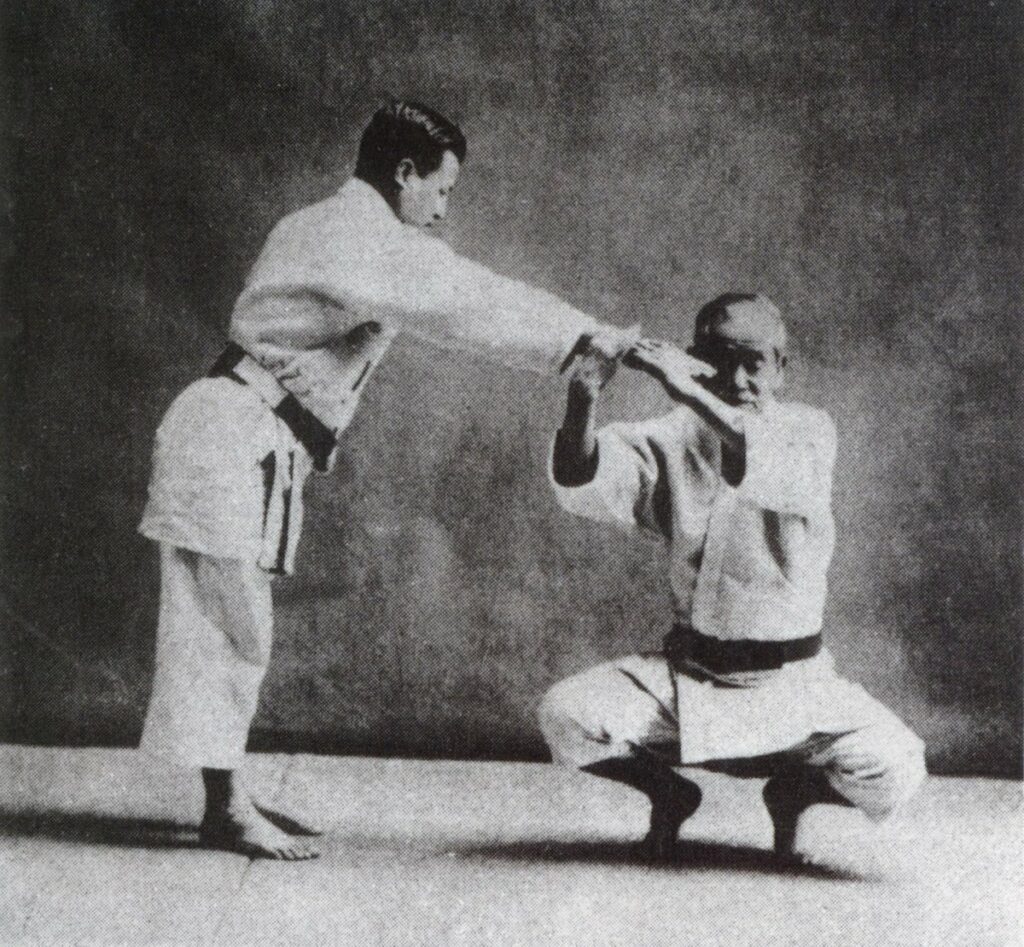While most people think of judo as just a confrontation between two fighters where the objective is to put your opponent on his back, this is not the only way to practice the sport. Kata are a way of perfecting the techniques of judo.
a codified art
The openings of the kata
In kata, Tori performs the movements and Uke receives the throws. Before starting, both opponents must go through a greeting procedure by the judges.
For Nage no kata the procedure is as follows:
Tori stands to the right of Joseki (the judges).
5.5 meters separate Uke and Tori. Uke and Tori turn towards the Joseki, then greet him in Ritzu-rei, and turn towards each other.
They descend to the ground (left knee first), toes up, kneel with toes extended and bow in Za-rei (knees 2 fists apart).
Then Uke and Tori stand up and take a step towards each other (left-right) to assume the Shizentai position. They are now 4 meters apart.
For katame-no-kata, which includes floor movements, the procedure is different
After greeting the joseki in ritsurei, Uke and Tori kneel face to face for the zarei. They then stand up and take a step towards each other. They kneel again, placing the left knee on the ground and then spreading the raised right knee. This position (taka-kyoshi-no-kamae) is generally referred to as the “high kneeling position”, and is maintained during kata movements and at the beginning of each technique.
the seven judo katas
The word “kata” means “form”, it consists of codified movements constituting a training exercise for the practice of these movements.
Kata are present in many martial arts, known to the general public especially for karate. But they also exist in aikido and in many non-Japanese martial arts.
In judo, they are seven:
– tame no kata:
Nage no kata are forms of projection, containing 5 series of 3 techniques performed to the left and then to the right of the tatami. Its demonstration is one of the tests for the black belt exam. This is the most common, the basic one.

Katame-no-kata must be presented at the 3rd dan. It consists of 15 judo ground techniques divided into 3 series. Each series deals with a different aspect of ground movements. Immobilizations, strangulations and dislocations are the three groups of techniques of this kata.



-The second is the Kime-no-kata:
It is required for the 4th dan. It is composed of both standing and ground techniques. The first 8 are done standing and the next 12 on the ground. Contrary to the previous kata, this one is oriented on defence and counter-attack. The judoka, Tori, must know how to make the right decisions according to the situation that presents itself to him. For each standing and sitting category, two types are performed, against an unarmed attack and against an armed attack.
juno-kata:
All kata deal with different aspects of judo which is a very complete art. No throws are made, it represents flexibility. Its rhythm is slower and puts into practice the elements of defence by controlling the opponent by elongation. This one is composed of 3 series of 5 techniques.
Go-No-Sen-No-Kata:
Like the Kime-no-Kata, this one is presented during the 4th dan passage. It is divided into 2 series of 6 counter movements. First, movements initiated by the leg and then by the hip.
Goshin-Jitsu-No-Kata:
Presented as part of the 3rd dan exam, it introduces various techniques of personal defense against close-range attacks with fists, feet, knife, stick or gun. It also deals with the different types of aggression that can be used to seize. Created in 1956, this 21-technique kata is the most recent. It is divided into 2 series, against armed and unarmed attacks.
Koshiki-No-Kata:
This kata is very different from the previous ones, it presents the ancient techniques of samurai self defence. It consists of two series of 14 and 16 techniques respectively. The first series is performed slowly since the fighters are presumed to be wearing armour. The second series is performed rapidly without any downtime. Koshiki-no-kata comes from the Kito school of Jiu Jitsu where Jigoro Kano studied. He incorporated these techniques into his art because he appreciated their teaching.
Itsutsu-No-Kata:
It is presented at the 7th dan exam. It is composed of 5 series related to the elements of nature: water, earth, fire, air and vacuum. Allowing us to create a relationship between the microcosm and the macrocosm, the interior of our body and the universe. For Kano, the purpose of this kata is both to explain the principle of maximum efficiency with minimum effort, and to represent the movements of the universe. It represents the very heart of Judo.
The Kodokan adopted Itsutsu No Kata in 1887. It’s the most profound, advanced and philosophical.

For information on sport kata competitions in France, visit this site.
If you’d like to find out more about a judo master who performed these kata to earn his 7th dan, read our article on Darcel Yandzi.
Find our judo kimonos and other accessories on our website. Subscribe to our social networks so you don’t miss any news.


